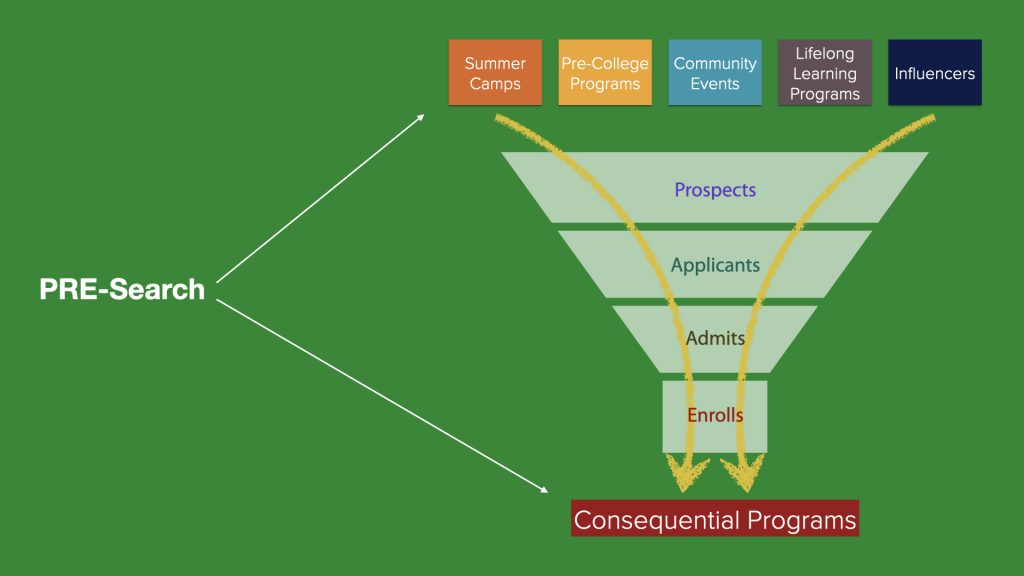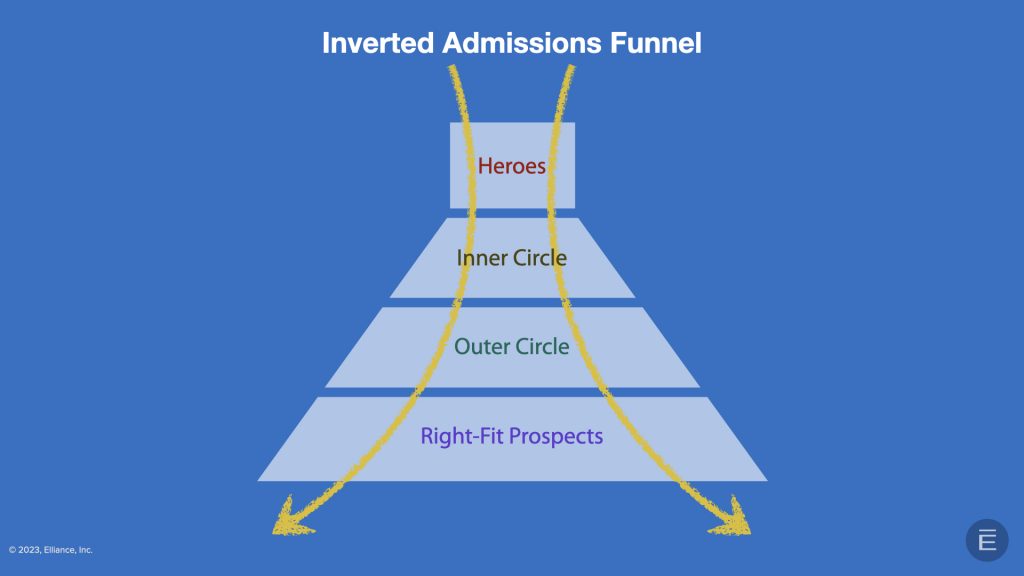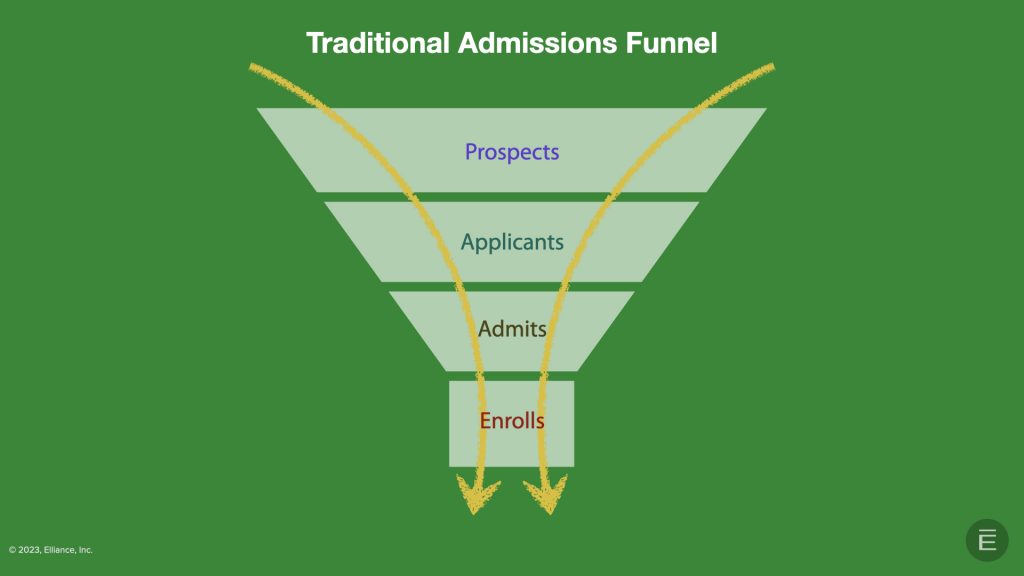| Jun 13, 2023
Traditional Student Search Services are Dying. Here is What’s Replacing Them.
The era of traditional high cost, high-volume and low-performance student search services is over.
Here’s how traditional student search services used to work: first, when taking SAT and AP tests, students gave permission to the college board to share their contact information with prospective colleges; in turn, the college board licensed (for one-two-use only) the student names to potential colleges at 50 cents per name; then, colleges bought boatloads of names from the college board; finally, colleges bombarded the prospects with commoditized emails/direct mail, hoping some would raise their hands, and praying some would convert.
Traditional student search worked initially but, over time, it started to backfire. Students and families got tired of being spammed by colleges and they got smarter. They started taking control of their college search. They are now consulting their peers, families and friends about which colleges they should consider. They are searching on Google for the college that’ll suit them the best. The privileged ones hire consultants to help them find the right college.
The net impact was that traditional student search services performance started dropping. They convert poorly and lower admissions yield. Royall & Company, which built a successful business on this premise, cashed out when they saw this model crumbling.
Smart Student Search Services 2.0
A new system has emerged. It demands a tight alignment between Academics, Admissions, Advancement and Marketing. It’s replacing the old system with the following:
1. PRE-Search: Surround and Engage Your Prospects Long Before They Are One
“Institutions which are good stewards of philanthropic investments in scholarship support and underwriting of consequential academic programs are naturally architected to attract right-fit students” says Jim Langley of Langley Innovations
Because familiarity breeds trust in the world of branding, colleges imagine, create and market recurring community events, summer camps, pre-college programs and lifelong learning programs. Some of these programs cater to smart parents looking for the right college that meets the unique needs of their child during the middle school. Likewise, marketing to influencers is a smart way to build high-volume pipelines for future students.

2. Optimized Content is Producing Great Quality Leads (Inverted Admissions Funnel)
A new paradigm of inverted admissions funnel has emerged. It begins by capturing, sharing and search-engine-optimized stories of your thriving students, alumni heroes, rock star faculty and pivotal partnerships so they surface in academic program pages, information sessions, search engines, social media and university magazines. Through these stories, colleges “get found” on search engines and “get shared” on social media and emails. This attracts like-minded, look-alike prospects. This creates admission pipes, not funnels. These right-fit students go on to become engaged citizens, brand ambassadors, recruiters, partners and donors.

3. Referrals are Turning Into Some of the Excellent Quality Leads
Happy students are becoming the largest source of future students. Satisfied graduates are bringing trust and credibility which is helping prospects cut through the clutter of choices and marketing.
4. Campus Visits and Events are Producing Excellent Quality Leads
College visits have become moments of truth. Face-to-face interactions during college visits, alumni outreach, and admitted student days improve the number of high-quality leads and admissions yield. Students are rewarding colleges that reach out to them in a caring, personal and organized manner. Successful colleges are casting and directing talented volunteers, tour guides, work study and junior staff — ensuring the talking points, presentations and touch points are all curated and orchestrated perfectly.
5. Paid Advertising is Generating Good Quality Leads (Traditional Admissions Funnel)
Paid advertising methodologies like advanced micro-segmentation, look-alikes, machine learning, big-data algorithms and affinity groups are generating better quality, right-fit leads.
Of course, not all paid channels perform equally well. Google generates solid leads for most professional and pre-professional undergraduate degrees. Undergraduate students convert best on Instagram and YouTube, but not on Snapchat and Tik Tok. Parents can be reached best on Facebook. LinkedIn generates quality leads for most adult and graduate students. LinkedIn is also a good channel for reaching influencers like teachers, principals, recruiters, HR and training professionals.

Directing prospects to skinny, high-pressure landing pages has reached its maturity date. Romancing prospects with rich, story landing pages and microsites which inform, persuade, engage, delight and convert prospects is the new normal. As the old business adage goes: you simply can’t bore prospects into buying from you or buy into your brand.
6. Contests, Social Media Campaigns, PR and Branding are Generating Right-Fit Leads for Patient Risk-Takers
Scholarship contests too produce great leads, but colleges must persist and work through the logistical challenges. With good agency partners, this can be a breeze.
Social media campaigns also generate a large number of excellent quality leads, but colleges should undertake them with their eyes wide open: they either work really well or they might limp along.
Rebranding and PR create a rising tide of great quality leads, but colleges should undertake these with an expectation for a pay off on a longer time horizon.
If you are seeking an enrollment marketing agency to grow enrollment for your college, view our higher education marketing capabilities and consider partnering with us.
